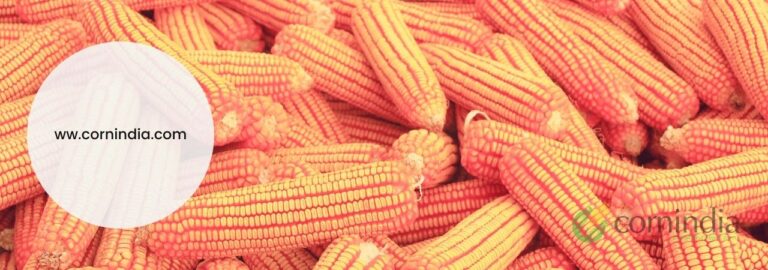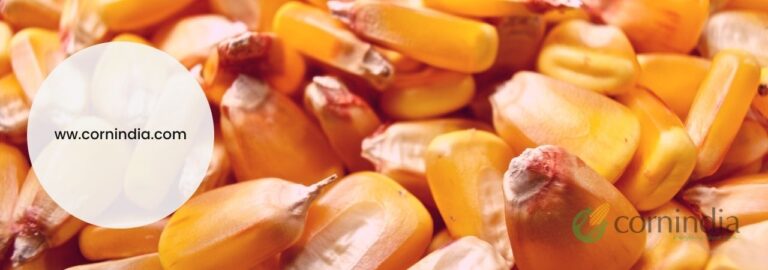
Abstract
Correlation coefficients and path analysis were computed for grain yield with some of the yield components in maize namely ear length, ear girth, grain number per ear and 1000 kernal weight in 10 parents and their all possible 45 direct crosses. The correlation coefficient values were highly significant for the maize yield attributes studied on yield and they have indicated their strong correlation with yield and their inherent capacity to influence it. The path analysis revealed that, 1000 kernel weight had the maximum direct effect on yield, where as ear length and ear girth exhibited indirect effect via 1000 kernel weight on yield,. Further, grain number per ear had influenced the grain yield mainly through ear length. Among the yield attributes studied, 1000 kernel weight seems to be the most important trait influencing the yield directly as well as indirectly.
KEY WORDS: Maize, Correlation, Path analysis
Yield is the most important objective in breeding of any crop, including maize. Yield components in maize is a complex character controlled by many factors including some components like ear length, ear girth, grain number per ear and 1000 kernel weight. Therefore selection for desirable genotypes should be made based on grain yield and also the other yield components which influence the yield; because these various yield components sometimes may be interlinked and may have plelotropic effect among traits of other economic importance. Hence the association analysis is usually taken up to measure the relative magnitude of influence of each of these independent variable on a dependent variable like yield. Path coefficient analysis separates the total correlation into direct effect and their indirect effect through other yield components in maize. In this investigation the results of correlation coefficients and path coefficient analysis for four yield components namely ear length, ear girth, grain number per ear and 1000 kernel weight on grain yield are presented.
Table of Contents
Materials and Methods
The experimental material had 10 inbred lines and their 45 direct single crosses which were sown in randomized block design with three replications during rabi 1982-83. Each entry was represented by a single row of 5 m spaced 75 x 25 cm apart.
Data on five quantitative traits viz., grain yield per plot, ear length, ear girth, grain number per ear and 1000 kernel weight were recorded from five randomly selected plants. Simple correlation between grain yield and all these yield components were worked out as per the method suggested by Snedecor and Cochran (1967). Because the correlations between grain yield and four yield components in maize were very high, they were further partitioned into direct effects and indirect effects following Lis, (1956) method of path coefficient analysis.
Results and Discussion
Correlation coefficients between yield and four yield components in maize were positive and highly significant indicating their strong association (Table 1). The R2 value of 0.9233 indicates that 92.33 per cent of the total variation in the grain yield could be attributed for these four yield components viz, ear length, ear girth, grain number per ear, and 1000 kernel weight. This also further indicates a very strong inherent association between these yield components with grain yield. The positive correlation coefficient values between the yield components in maize and the grain yield indicate that, an increase in any one of these or all of these quantitative characters would bring a simultaneous increase in the yield.
The path coefficient analysis indicated that grain yield per plot was highly influenced by 1000 kernel weight by its direct effect. The magnitude of its indirect effect through ear length and ear girth was meager but positive, whereas through grain number per ear was negative but feeble. Probable this negative effect might be compensated by its high and direct effect, resulting in a very high value of positive and significant total correlation coefficient.
Table.1. Total correlation coefficient between yield components and yield
| Character | Ear girth | Grain number | 1000 kernel weight | Grain yield |
| Ear length | 0.9414** | 0.9216** | 0.9112** | 0.8439** |
| Ear girth | – | 0.9555** | 0.9443** | 0.8531** |
| Grain number per ear | – | – | 0.9647** | 0.8893** |
| 1000 kernel weight | – | – | – | 0.9069** |
Table.2. Path-coefficient analysis showing direct and indirect effects of four yield component characters.
| Character | Ear length | Ear girth | Grain number | 1000 grain weight | ‘r’ with yield |
| Ear length | 0.1313 | 0.0969 | 0.0414 | 0.5743 | 0.5743 |
| Ear girth | 0.0461 | 0.1931 | 0.0492 | 0.5647 | 0.5647 |
| Grain number per ear | 0.5453 | 0.2051 | 0.1818 | -0.0429 | -0.0429 |
| 1000 kernel weight | 0.1653 | 0.0718 | -0.0569 | 0.7267 | 0.7267 |
All diagonal values which are underlined are direct effects.
The positive and highly significant correlation coefficient value of grain number per ear on yield was mostly through its indirect effect via ear length, followed by ear girth and to some extent by its direct effect. It had negative but weak association through 1000 kernel weight on yield; the strength of association of grain number per ear with yield was considerably increased due to its indirect effect through ear length and ear girth, compensating the negative effect via 1000 kernel weight.
The positive and highly significant correlation coefficient value of grain number per ear on yield was mostly through its indirect effect via ear length, followed by ear girth and to some extent by its direct effect. It had negative but weak association through 1000 kernel weight on yield. The strength of association of grain number per ear with yield was considerably increased due to its indirect effect through ear length and ear girth, compensating the negative effect via 1000 kernel weight.
In case of ear girth, the positive and highly significant correlation coefficient value was due to its very high indirect contribution via 1000 kernel weight followed by its own direct effect on yield. The indirect effect on yield through ear length and grain number per ear was weak but positive.
The positive and significant correlation coefficient value of ear length on yield was again chiefly due to its indirect effect through 1000 kernel weight, to a lesser extent by its direct effect, in addition to its weak indirect effect through other yield components namely ear girth and grain number per ear.
All the yield components viz., ear length, ear girth, grain number per ear and 1000 kernel weight showed a highly significant and positive correlation coefficient values with yield. While 1000 kernel weight had a maximum influence on yield by its positive direct effect and also its indirect effect through other yield components.
Similar results were reported by Panchanathan ett al. 91978) in their study with three yield components namely grain number per cob, length of the cob and 1000 grain weight on grain yield components in maize. Kuldeep singh et al. (1978) also observed that maize grain yield was highly correlated with length of cob, number of grain per cob, weight of grain per cob and 1000 grain weight.
The direct influence of ear girth, grain number per ear and ear length on yield was relatively small but positive. With this investigation it was evident that there was very strong relationship between 1000 kernel weight and yield.
References
- KULDEEP SINGH, RAMMOHAN RAO, D.S. and HARBIRSINGH 1987. Correlation and path coefficient analysis of yield and yield components in maize Ganga hybrid-5, Haryana agric.J.Res., 17 (1):64-67.
- LI, C.C. 1955.Population Genetics Chicago University Press, Chicago.
- PANCHANATHAN, R.M., SUBRAMANIAN, S and KOLANDAI SWAMY, S.1978, Path coefficient study in maize grain yield with attributes Madras Agric.J, 65: 78-80.
- SNEDECOR, G.W. and COCHRAN, W.G.1967. Statistical methods. Oxford and IBH, Calcutta.
Authors
E.Satyanarayana, R. Sai Kumar, and G. Koteswara Rao
Argl. Research Station. Amberpet, Hyderabad-13.






